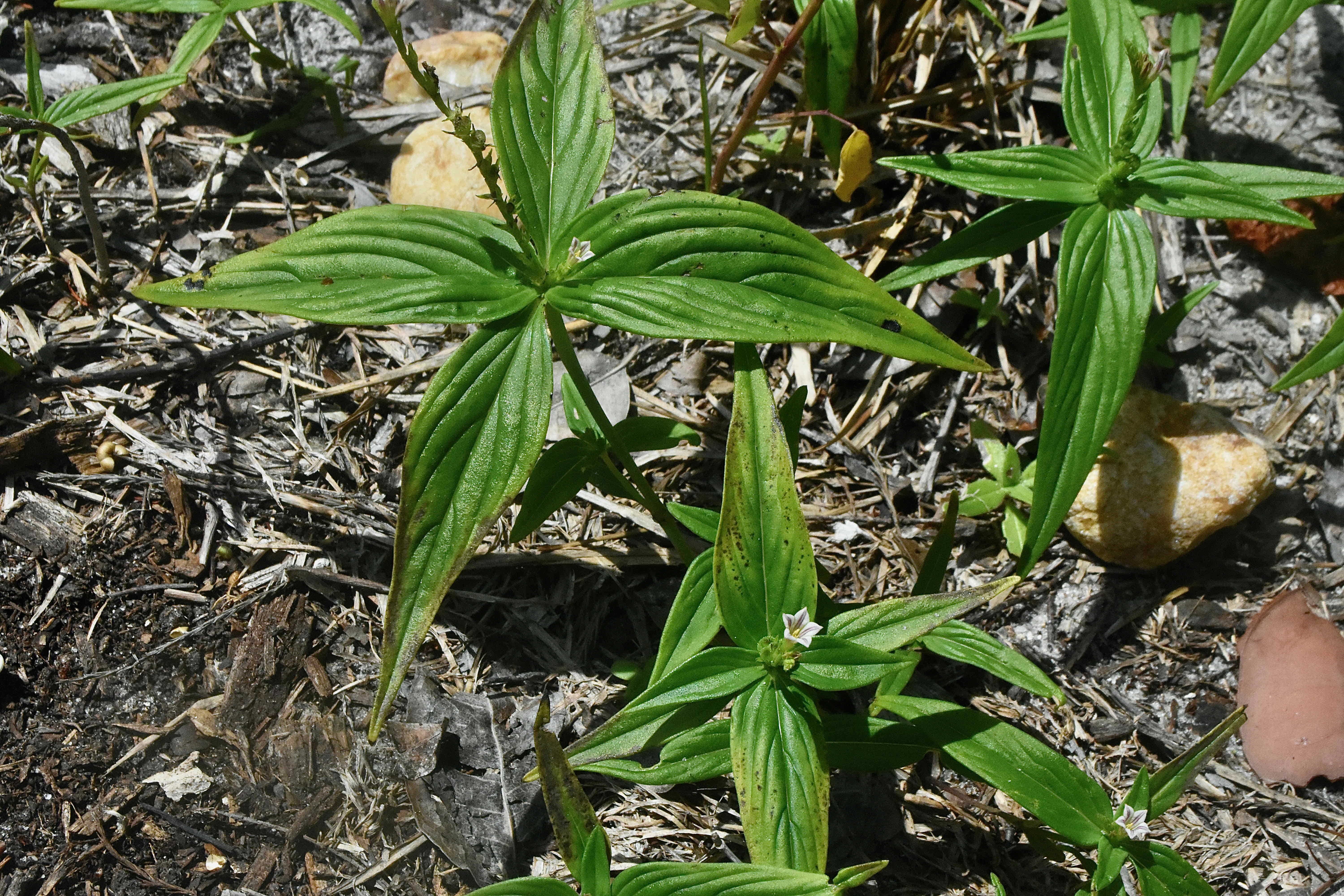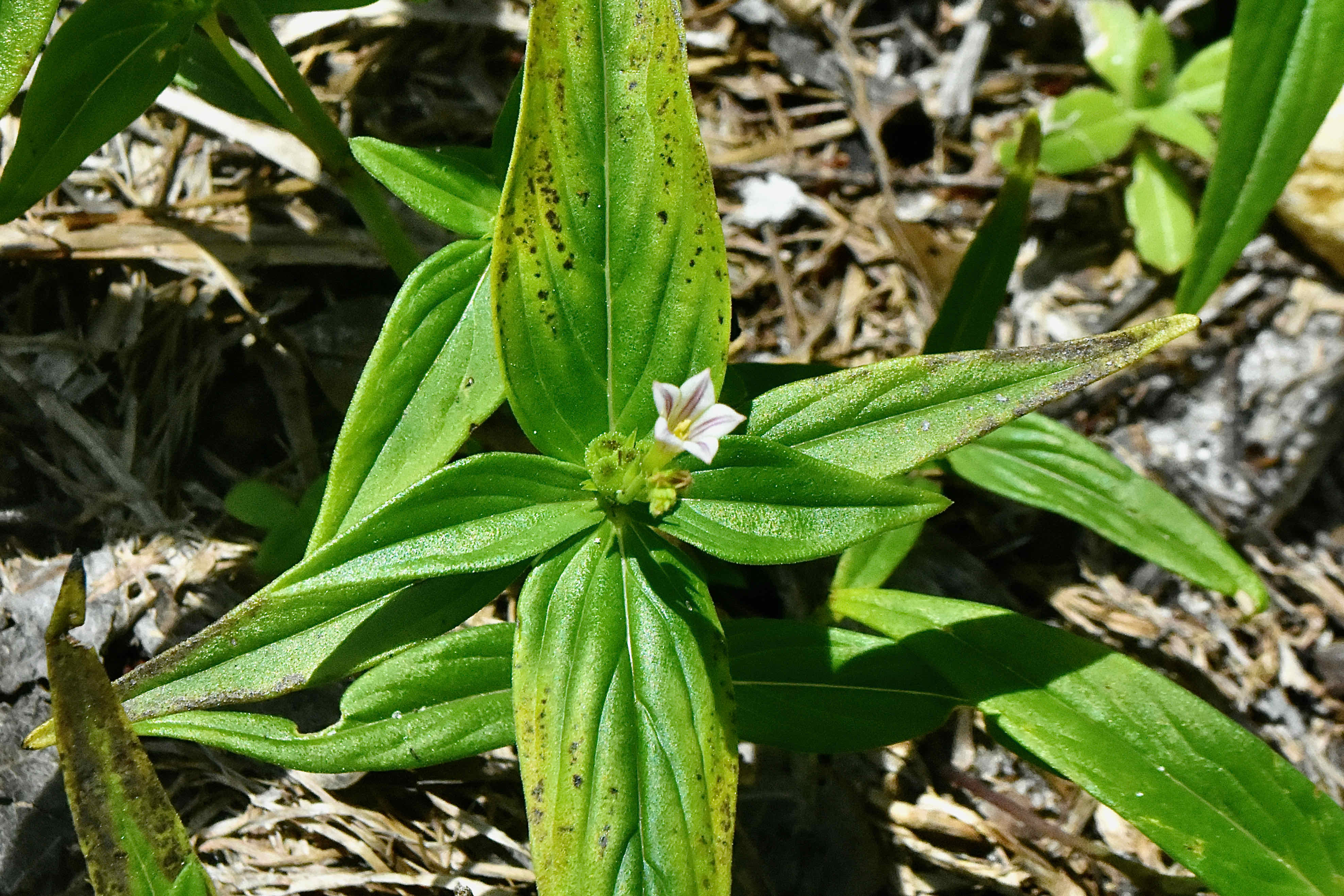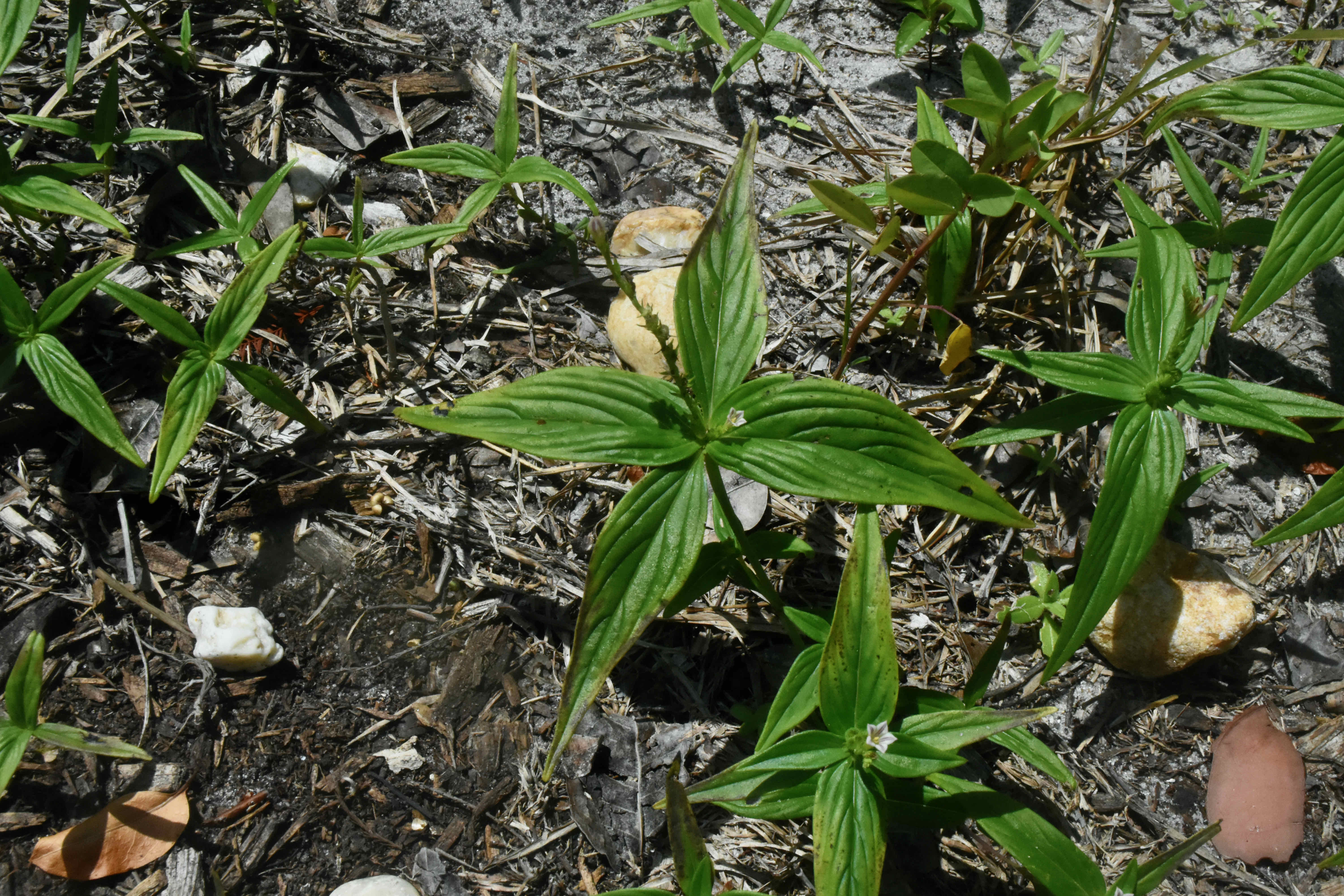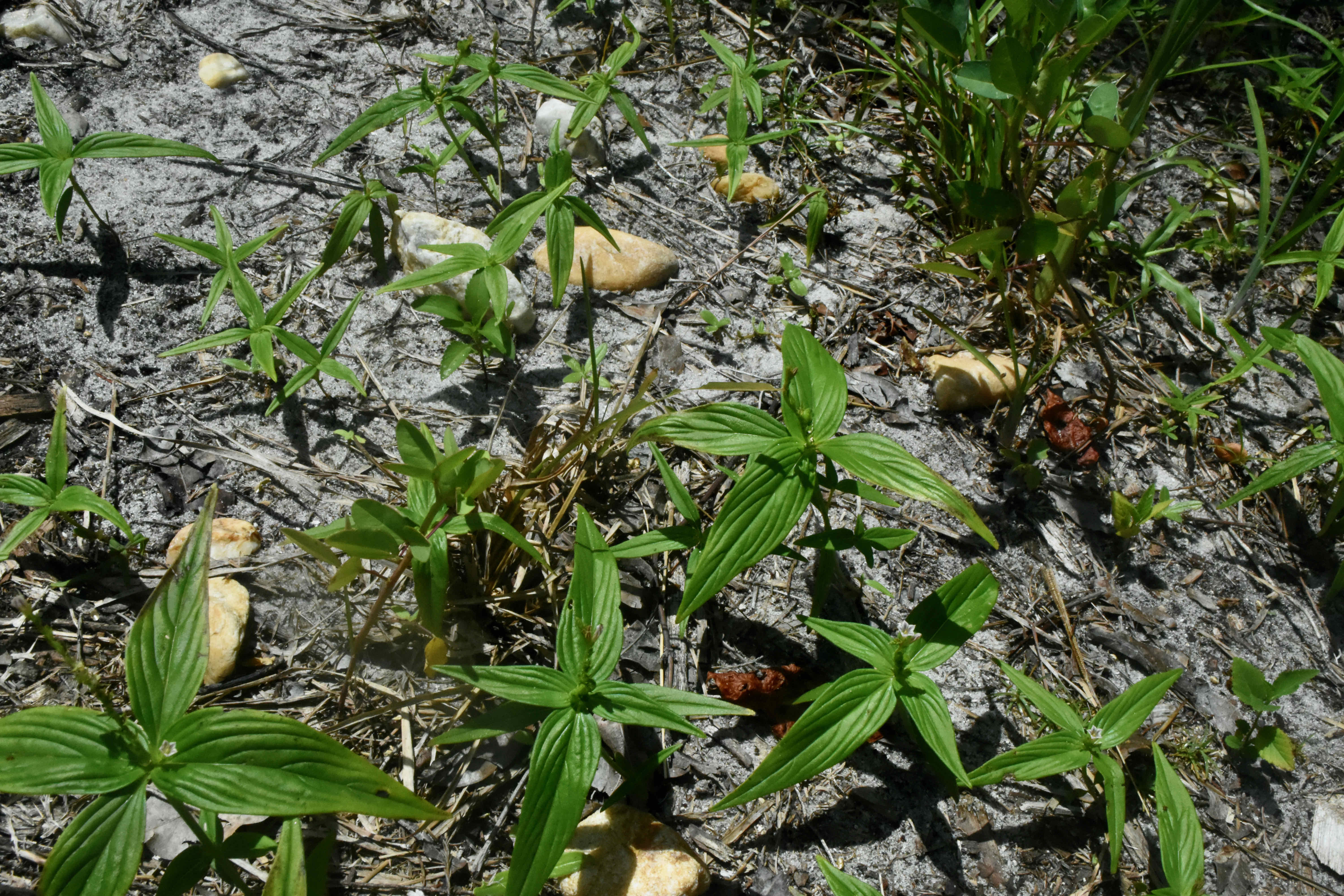
West Indian Pinkroot, photographed at Quiet Waters Park, Deerfield Beach, Broward County, in June 2021.
West Indian pinkroot, Spigelia anthelmia, isn’t a plant to be trifled with. It’s a powerful medicine, used to treat a host of conditions, particularly intestinal worms. But the chemicals it possesses are potent enough to kill grazing cattle and the plant itself has been used as rat poison. It's that important and it's that deadly.
It’s a Florida native, but a rare one, only found in four counties, all in South Florida. Florida is the only state in the U.S. where it grows in the wild.
Its natural range extends through the Caribbean, Mexico, Central America and South America. Some include parts of the Old World, particularly West Africa, as within its natural range, but others say it’s a naturalized plant beyond the western hemisphere. In any case, it’s become an important part of traditional medicine in places. It’s also been found in parts of Asia.
It’s a small plant, reaching perhaps 20 inches off the ground, often less. Inconspicuous it’s not, however, thanks to its unusual flowers and more so to its unusual foliage — leaves that are glossy green, with prominent veining that radiates from the leaf base and create a kind of quilted pattern, for lack of a better term. The leaves are simple, entire — no lobes or serrations along the outer edges — and arranged opposite each other along the stem, each coming to sharply tapered point.
The flowers are small, star-shaped, with five pointed petals, each with two purplish lines that lead to the throat and a deep tube. West Indian pinkroot has a single stem and a few branches where the flowers are borne.
The overall effect is one cool looking plant.
You would think those purple lines would attract insects and lead them to some sweet nectar where they might dine and pollinate the plant. But West Indian pinkroot self-fertilizes. Sperm from atop a long pollen tube makes its way to down the length of the tube to the base, where the ovary sits. Once the first sperm reaches the ovary, the tube snaps off just above the ovary, preventing more sperm from fertilizing more eggs.
Scientists believe the reason for this is to allow only the strongest sperm to fertilize the eggs. It limits the number of seeds that can be produced, but in theory produces stronger, more vigorous seed. Quality over quantity. Pinkroot seed, by the way, can last three or more years and still germinate.
Use of West Indian pinkroot as a vermifuge, or as an agent to rid the body of parasitic worms, dates back hundreds of years, if not longer. The Creek tribe used it for that purpose. The great Swedish scientist, Carl Linnaeus, actually wrote a book about it. Not coincidentally, he described the plant and gave it its scientific name.
The active ingredients in West Indian pinkroot are two alkaloids, spigathane and spigaline. The highest concentration of alkaloids is found in the roots and fruit of the plant; spigaline is found in the leaves. As we noted above, the plant isn’t to be trifled with: it’s been known to kill cattle that have grazed on it when it’s in fruit. It’s also been used as a murder weapon.
It has a cousin, Spigelia marilandia, commonly known as Indian pinkroot, that was also used as a vermifuge and nearly harvested into extinction. Indian pinkroot is found throughout the Southeast, including Florida, but only in the Panhandle.
Other medicinal uses for West Indian pinkroot: treating spasms and nervous attacks, sore throats, thrush (a fungal infection of the mouth), high blood pressure and chest complaints.
West Indian pinkroot is a host plant for the regal cydosia moth, which probably uses the plant’s alkaloids as a defense the way monarch butterflies use the alkaloids in milkweeds.
Other common names: wormgrass and wormbush, both also spelled as two words. West Indian pinkroot is a member of Loganiaceae, the logania family.



